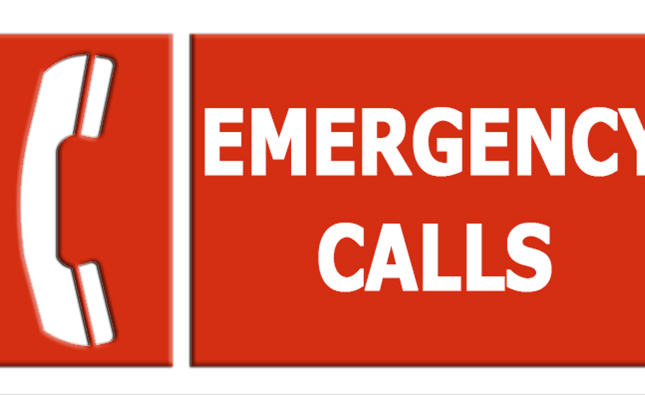
Introduction
Clean and hygienic communal areas aren’t just about looking good they’re essential for a safe, healthy workplace. Whether it’s the office kitchen, shared toilets, or break rooms, communal spaces are used by many, making them prime locations for germs, bacteria, and other hygiene-related hazards.
One day, a colleague of mine caught a nasty stomach bug from an unclean shared microwave. It not only affected his health but also led to several others falling ill. That one small hygiene lapse had a ripple effect across the department. This shows just how serious hygiene risks in communal areas can be.
Keeping these areas clean doesn’t just protect health; it also boosts morale and productivity. Let’s explore how to effectively manage these hygiene risks with simple, actionable steps — so your workplace stays safe, professional, and welcoming.
Understanding Hygiene Risks in Communal Areas
Communal spaces, by design, are high-traffic zones. That means more people, more contact, and unfortunately, more potential for germs to spread. Kitchens, restrooms, meeting rooms, and shared equipment like coffee machines or printers are all hotspots.
Why It Matters in Workplace Safety
In many organizations, poor hygiene isn’t just an inconvenience — it’s a workplace hazard. It can lead to infections, cross-contamination, and even long-term illness if not managed correctly.
This is where the OSHA Course plays a vital role. The OSHA Training Course educates professionals on identifying and controlling such hazards. It highlights that hygiene isn’t only a personal responsibility but also a legal and organizational obligation.
Let’s break it down step-by-step on how you can manage these hygiene hazards efficiently.
Step-by-Step Guide to Manage Hygiene Risks in Communal Areas
1. Identify High-Risk Zones
Start by listing out all communal areas. Then observe how frequently they’re used and by how many people. This will help you prioritize where the most effort is needed.
Examples of common risk areas:
- Shared kitchens
- Restrooms
- Office pantries
- Break rooms
- Conference rooms
- Shared desks or hotdesking setups
Anecdote:
A facility manager once told me how they noticed their team falling sick more often. After some investigation, they found the refrigerator in the break room hadn’t been cleaned in weeks. Leftovers were rotting inside! Once they set a weekly cleaning schedule, sickness rates dropped dramatically.
2. Create Clear Cleaning Protocols
Without a plan, hygiene efforts become inconsistent. Cleaning schedules must be posted, tracked, and followed strictly.
Essential parts of a cleaning protocol:
- Who cleans what (assign roles clearly)
- How often (daily, weekly, monthly)
- What cleaning materials are required (disinfectants, gloves, etc.)
Use checklists to ensure nothing is skipped. For example, clean microwave handles, fridge doors, or water dispenser buttons — all of which are touched frequently but often forgotten.
3. Use Proper Waste Disposal Methods
Overflowing bins or food wrappers lying around are not only eyesores they attract pests and harbor bacteria. All communal areas must have:
- Enough trash bins
- Regular disposal schedules
- Clear labels (e.g., food waste, general waste)
Encourage employees to use the bins properly. Sometimes, just putting up a funny reminder sign near the bin can do wonders.
4. Promote Personal Hygiene Practices
Hygiene starts with individuals. Encourage everyone in the workplace to take basic precautions.
Include reminders such as:
- Wash hands after using the restroom
- Clean up after using kitchen appliances
- Cover mouth when sneezing or coughing
- Use sanitizer regularly
You could also install hand sanitizing stations at every entrance and outside every communal space.
Tip: Posters, newsletters, or digital signage with catchy hygiene messages keep the idea top-of-mind.
5. Invest in the Right Cleaning Supplies
Sometimes the right tools make all the difference. Stock up on:
- Disinfectant sprays
- Surface wipes
- Touchless soap dispensers
- Paper towels
- Air purifiers for poor-ventilated areas
A workplace that provides these tools makes it easier for everyone to contribute to cleanliness.
6. Train Staff Regularly
Training ensures everyone knows what’s expected and how to do it. Consider conducting short hygiene training workshops every quarter.
If your organization handles food or healthcare, this becomes even more critical. OSHA Training Courses often include modules on hygiene protocols and workplace sanitation, making them highly beneficial for employers and employees alike.
7. Conduct Regular Inspections
Assign a hygiene officer or create a rotation system where different staff members inspect the communal areas weekly.
A 5-minute walkthrough can reveal:
- Overflowing bins
- Unwashed mugs in the sink
- Dirty microwaves
- Empty soap dispensers
Fixing small issues on time helps avoid bigger hygiene hazards down the road.
8. Introduce a Hygiene Policy
A hygiene policy is a written document that outlines expectations and responsibilities. It includes:
- What areas are covered
- Individual responsibilities
- Procedures to report hygiene issues
- Consequences for repeated negligence
Make this part of your onboarding process so new employees understand it from day one.
9. Encourage a Culture of Cleanliness
Hygiene isn’t just about rules it’s about culture. When management leads by example, employees tend to follow.
Celebrate cleanliness achievements! Maybe the “Cleanest Team of the Month” gets a free lunch. Positive reinforcement often works better than penalties.
Anecdote:
In one company, they started rewarding the most hygienic team with a trophy — a glittery gold toilet seat! It sounds silly, but it worked. Teams were laughing, cleaning, and competing to win.
10. Plan for Emergencies
What happens if someone is diagnosed with a contagious illness? Have a plan ready. This might include:
- Temporary closures of certain areas
- Deep cleaning schedules
- Employee testing or isolation protocols
Being prepared shows employees you care and reduces panic during a health scare.
Benefits of Managing Hygiene Risks Effectively
- Reduces absenteeism due to illness
- Improves employee morale and job satisfaction
- Builds a professional image for clients and visitors
- Helps meet compliance with health and safety laws
- Lowers long-term facility maintenance costs
What OSHA Says About Hygiene in Communal Spaces
The OSHA Course emphasizes that a safe workplace isn’t just about hard hats and hazard signs — it’s also about keeping every environment, including communal ones, clean and hazard-free.
OSHA in Pakistan has also begun spreading awareness through localized training, focusing on real-life challenges in workplaces across different industries.
Final Thoughts
Managing hygiene in communal areas isn’t a one-time effort it’s an ongoing commitment. By following the step-by-step approach above, businesses can significantly reduce the risk of hygiene-related illnesses and create a safer, more pleasant environment for everyone.
Cleanliness is not just about appearance; it’s about protection. Every coffee stain left uncleaned, every bin not emptied, and every hand not washed is a potential hazard. Let’s be proactive not reactive.
If you’re looking to train your staff and build a culture of safety and cleanliness, consider enrolling in an OSHA Course. It provides the foundation needed to recognize and manage workplace hazards including the often-overlooked hygiene risks.Let’s make every shared space a safe space.










